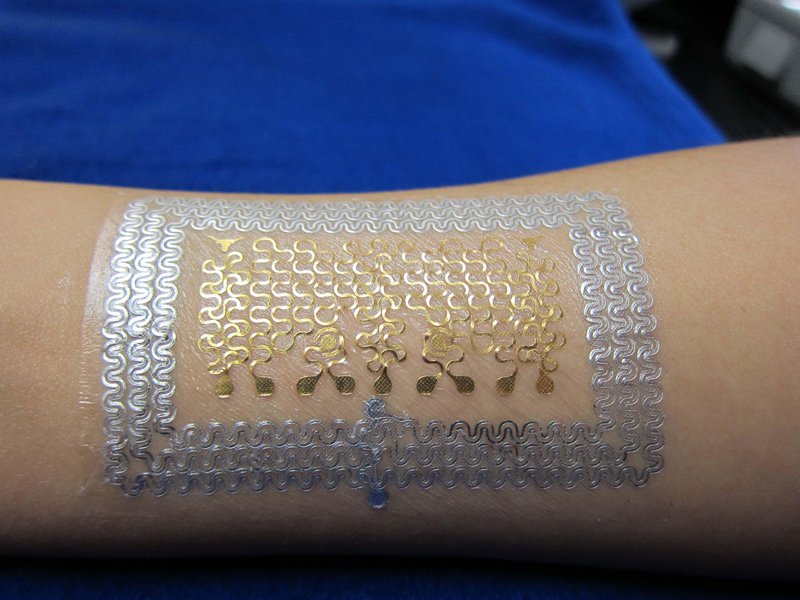 Patients in hospitals, elderly folks and people with heart problems might soon be wearing temporary tattoos instead of heart rate monitors or pulse oximeters. Professor Nanshu Lu and a team at the University of Texas at Austin’s Cockrell School of Engineering have come up with a way to quickly print cheap, wearable biosensors.
Patients in hospitals, elderly folks and people with heart problems might soon be wearing temporary tattoos instead of heart rate monitors or pulse oximeters. Professor Nanshu Lu and a team at the University of Texas at Austin’s Cockrell School of Engineering have come up with a way to quickly print cheap, wearable biosensors.
When the researchers were looking at building tattoo-like wearables, they knew there were plenty of smart, tiny, sensors on the market. The problem wasn’t with the technology, Lu says, it was with the manufacturing process, which was long, tedious and expensive. That made it nearly impossible to develop disposable sensors to temporarily monitor health outcomes.
“Ultimate, if you think about tattoo-like electronics, no one wants to reuse them—not even on yourself—so the disposable nature is key,” Lu says.
Previously, similar sensors had been made by engineering the mechanical component, a metal circuit, and then integrating it with a stretchy adhesive. The process was expensive and time consuming.
The researchers looked at alternative ways to make brittle electronics flexible and sticky. Using the principles of 3D printing, they figured out a way to use a mechanical cutter to carve out patterns on a sheet of metal instead of forming the electronics in a mold.
“We started to look for metal sheets deposited on polymer sheets, basically like aluminum foil laminated onto double-sided tape,” Lu says. They found the cheap, flexible metal surprisingly easily—in the home improvement aisle of a hardware store. Things like gold-coated polymers are used as heat reflection in construction.
“We invented a process that can form cutting patterns onto those sheets, then remove the unnecessary parts,” she says. “The leftover part is transfer printed onto medical tape or tattoo adhesive.”
The printing takes about 20 minutes, and unlike previous methods for building flexible electronics, this one creates minimal waste and doesn’t require a special lab. Lu says she wants to get costs down to about $1 per patch.
Read More – Source: Tiny, Tattoo-Like Wearables Could Monitor Your Health | Innovation | Smithsonian